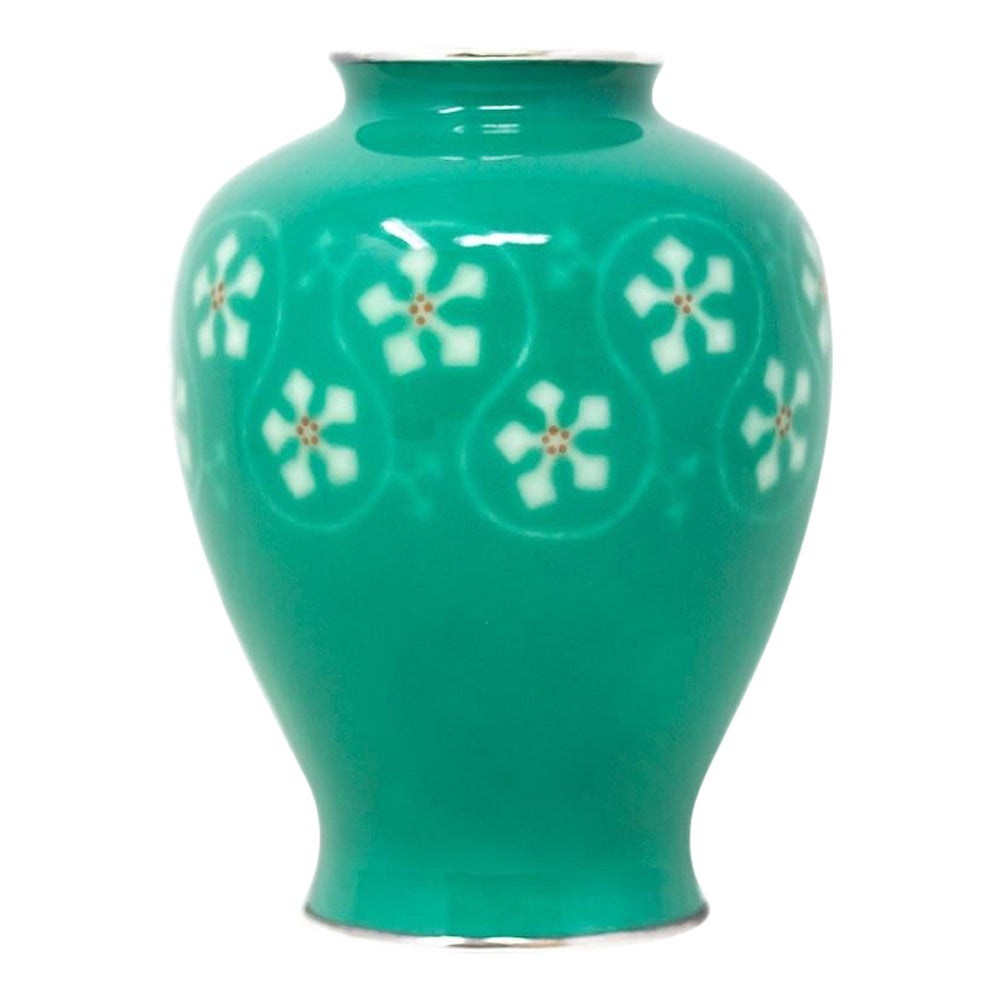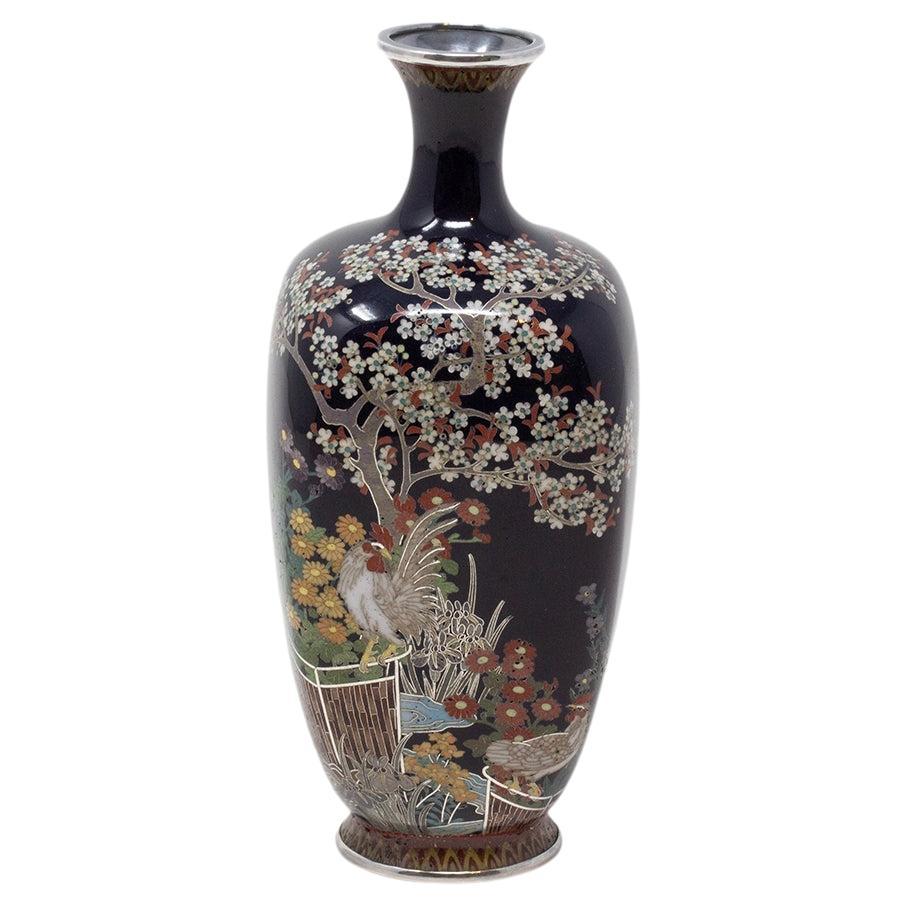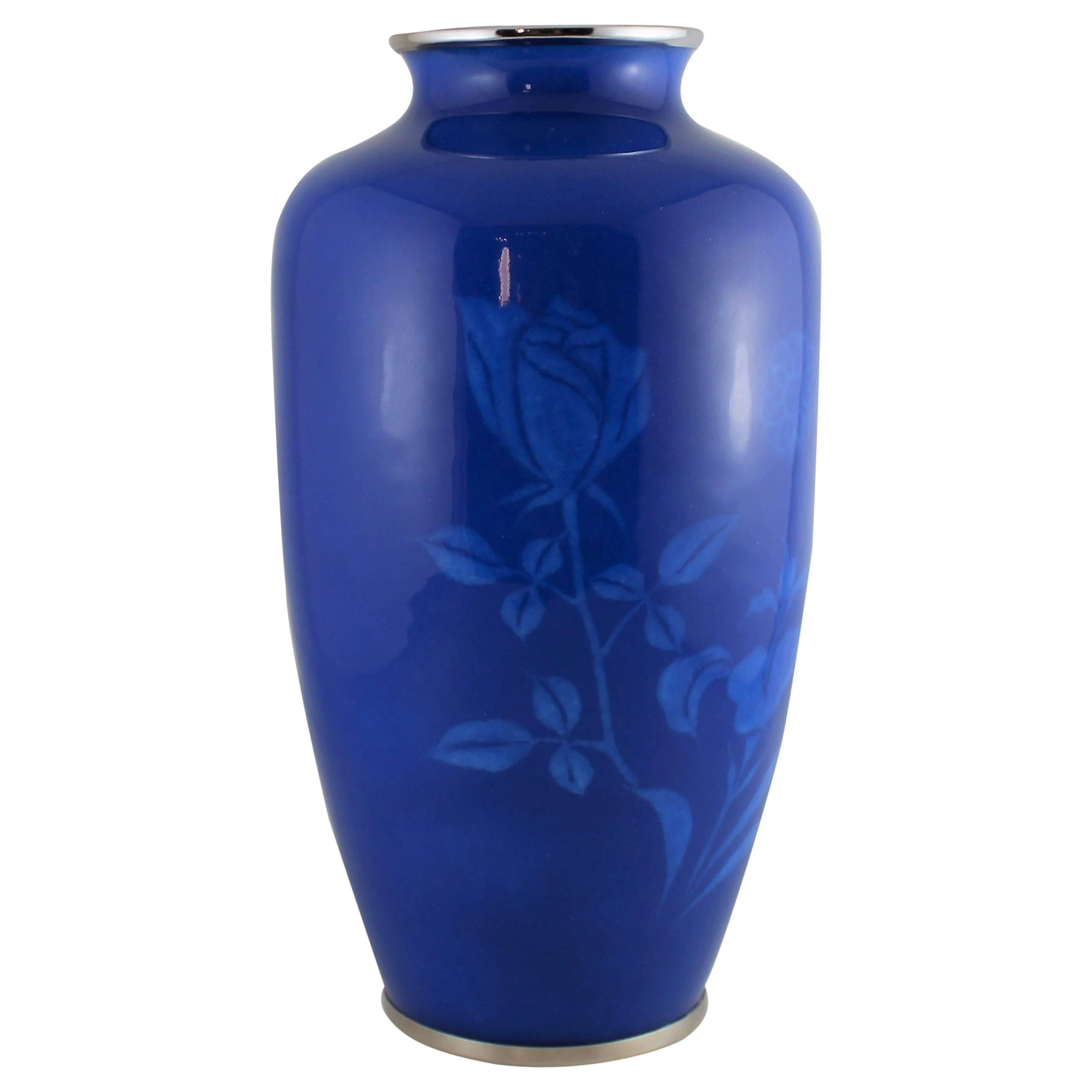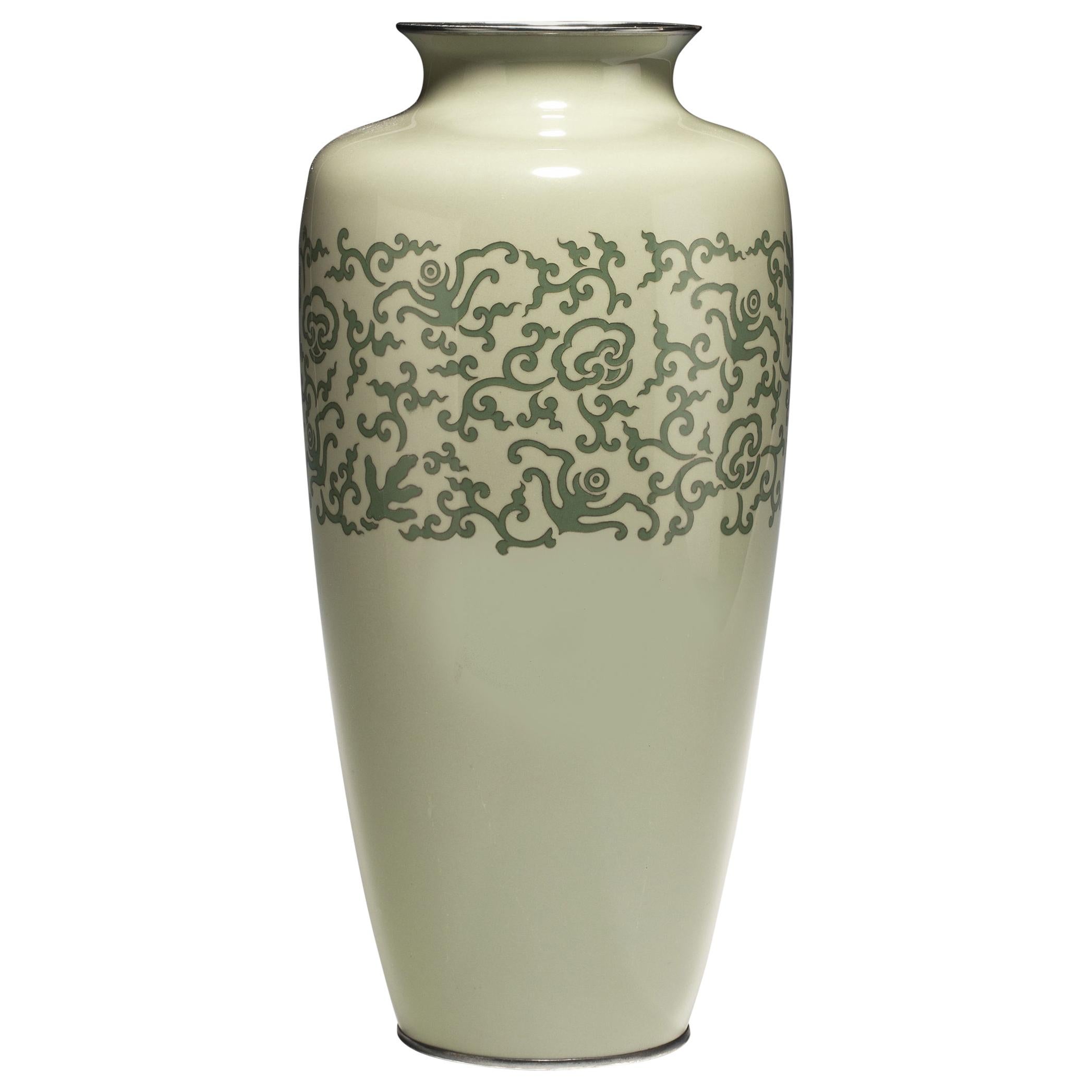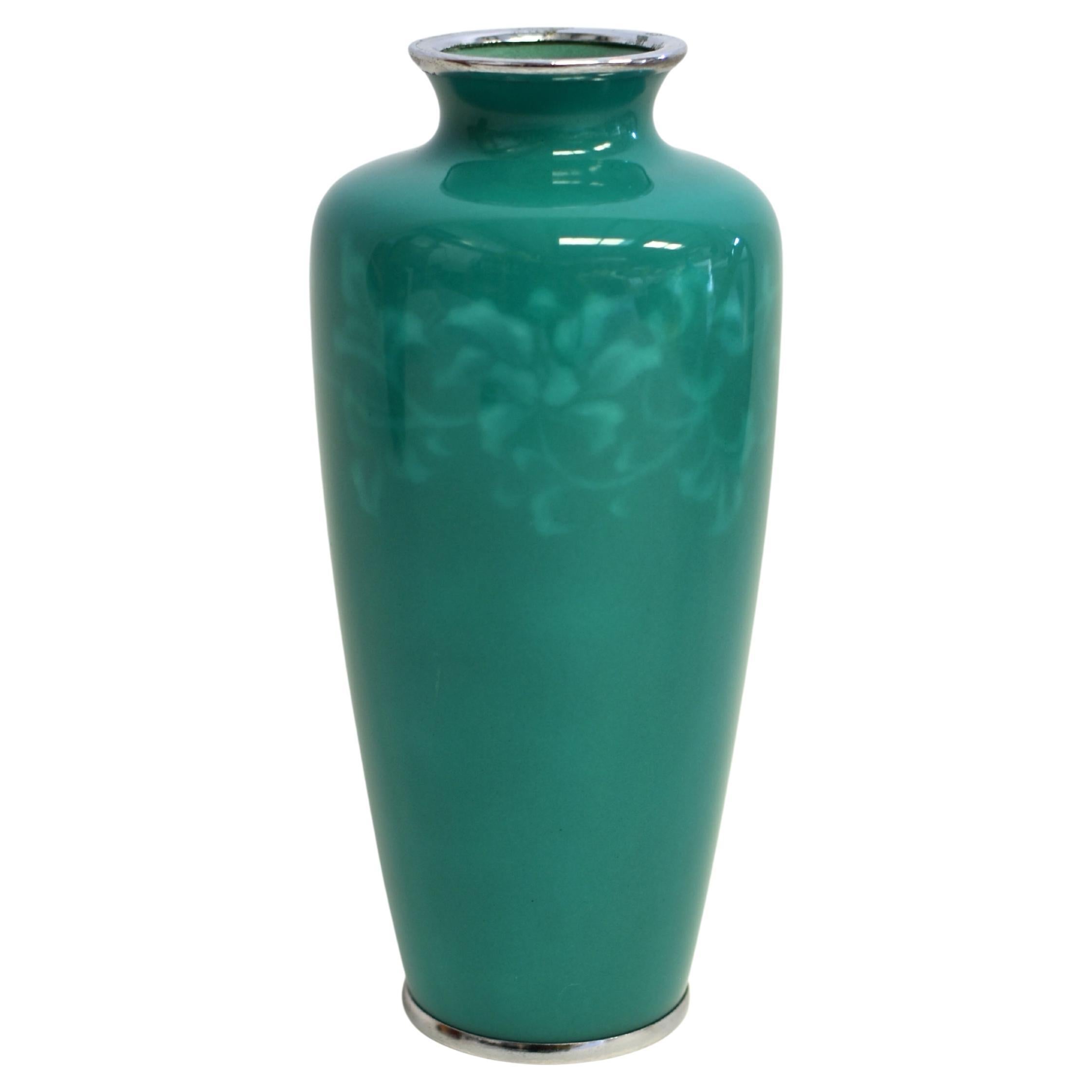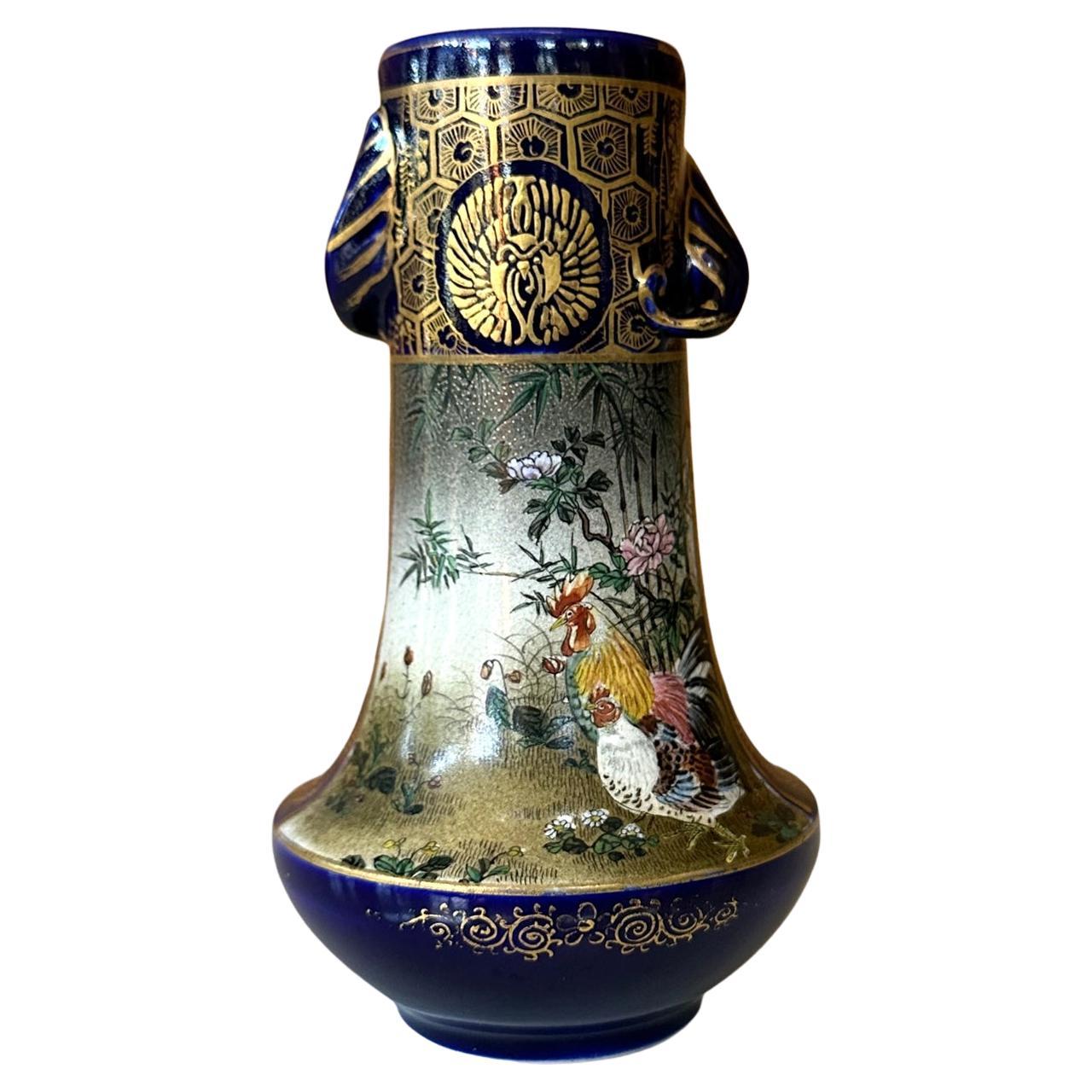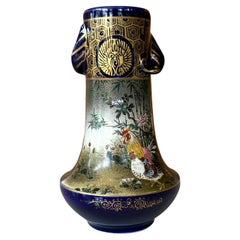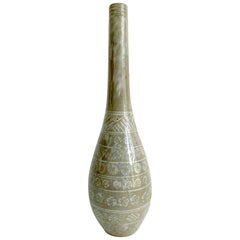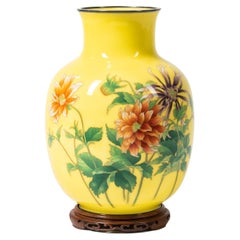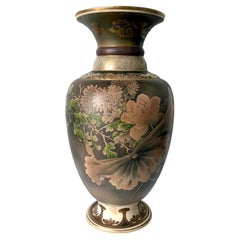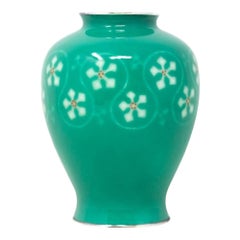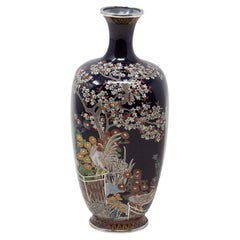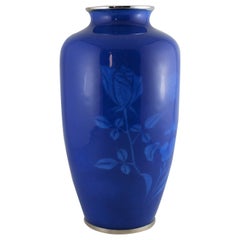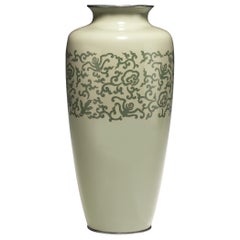Items Similar to Japanese Wireless Musen Cloisonne Vase by Ando Jubei
Want more images or videos?
Request additional images or videos from the seller
1 of 12
Japanese Wireless Musen Cloisonne Vase by Ando Jubei
$3,600
£2,769.36
€3,214.44
CA$5,076.86
A$5,686.94
CHF 2,986.98
MX$69,151.32
NOK 37,824.98
SEK 35,906.08
DKK 23,990.60
About the Item
A Japanese cloisonne vase in bottle-form made by Ando Jubei (1876-1963) circa 1910-20s (late Meiji to Taisho period). The vase features a completely smooth surface without showing any wire. The technique is known as Musen (hidden wire) in Japanese and was notoriously difficult to perfect, especially with piece like this with a relatively large continuous surface. The beguiling effect is to use enamel to mimic porcelain or even jade. This vase, with its ultra smooth surface and soft yellow color (Yellow was often associated with Japanese imperial household), calls in mind the texture of mutton-fat jade (a type of nephrites with a warm lustrous hue that was cherished in China historically). Perhaps that was what intended in the artist's mind, to mimic the appearance of jade. The only decoration comes in the white ridged lines along the neck of the vase, giving it an art deco appeal. Both the mouth and base rim were covered in sterling silver and marked "pure silver" in Kanji. The base of the vase is branded with Ando Jubei Company's four-petal logo.
Japanese cloisonné wares are known as shippo-yaki and starting from the mid-19th century saw the production of very high-quality wares in the studios around Nagoya. One of the most renowned workshops was the Ando Cloisonné Company, founded by Ando Jubei (1876-1953). The cloisonné work from the workshop was considered the finest during the Meiji and Taisho Period.
- Creator:Ando Jubei (Manufacturer)
- Dimensions:Height: 8.75 in (22.23 cm)Diameter: 4.2 in (10.67 cm)
- Style:Meiji (Of the Period)
- Materials and Techniques:
- Place of Origin:
- Period:
- Date of Manufacture:1900-1920s
- Condition:Wear consistent with age and use. Fine condition. Both silver rims show oxidation. Base rim shows expected contact wear like fine scratches and minute bumps.
- Seller Location:Atlanta, GA
- Reference Number:1stDibs: LU945039252512
About the Seller
4.9
Platinum Seller
Premium sellers with a 4.7+ rating and 24-hour response times
Established in 2006
1stDibs seller since 2010
565 sales on 1stDibs
Typical response time: <1 hour
- ShippingRetrieving quote...Shipping from: Atlanta, GA
- Return Policy
Authenticity Guarantee
In the unlikely event there’s an issue with an item’s authenticity, contact us within 1 year for a full refund. DetailsMoney-Back Guarantee
If your item is not as described, is damaged in transit, or does not arrive, contact us within 7 days for a full refund. Details24-Hour Cancellation
You have a 24-hour grace period in which to reconsider your purchase, with no questions asked.Vetted Professional Sellers
Our world-class sellers must adhere to strict standards for service and quality, maintaining the integrity of our listings.Price-Match Guarantee
If you find that a seller listed the same item for a lower price elsewhere, we’ll match it.Trusted Global Delivery
Our best-in-class carrier network provides specialized shipping options worldwide, including custom delivery.More From This Seller
View AllFine Japanese Ceramic Satsuma Vase by Kinkozan
By Kinkozan
Located in Atlanta, GA
A miniature Japanese ceramic vase from the end of Meiji period circa 1880s- 1910s by Kinkozan (1645-1927). One of the largest studio manufacturers of the export ceramics at the time ...
Category
Early 20th Century Japanese Meiji Ceramics
Materials
Ceramic
Japanese Mishima Ceramic Vase Meiji Period
Located in Atlanta, GA
A Japanese long neck slender ceramic vase in the style of Mishima, circa 19th century, Meiji period. Mishima pottery was originally imported from three islands in Taiwan and then fro...
Category
Antique 19th Century Japanese Japonisme Ceramics
Materials
Ceramic
Japanese Cloisonné Vase Ando Jubei with Storage Box
By Ando Jubei
Located in Atlanta, GA
A beautifully decorated cloisonné vase with silver rims by Ando Jubei (1876-1956), the celebrated Japanese Shippo studio. The piece is dated to late Meiji to early Showa period circa...
Category
Early 20th Century Japanese Japonisme Metalwork
Materials
Metal, Silver, Enamel
Large Japanese Satsuma Ceramic Vase Kinkozan
By Kinkozan
Located in Atlanta, GA
A large Japanese ceramic vase from the end of Meiji period circa 1890-1910s by Kinkozan (1645-1927). One of the largest studio manufacturers of the export ceramics at the time based in Kyoto. In the typical style of satsuma made at the turn of 20th century, the vase is elaborately decorated with a rather unusual kinran-de (gold paint) and green enamel highlight on a mottled brown background. The painterly decoration depicts a large seasonal floral arrangement in a circular fashion. Besides the obviously superb craftsmanship, what sets this particular vase apart from many lower quality and mass-produced pieces is its tone-on-tone color pallet that is visually somber and the small and sensitive details that heralds the change of the seasons. When the viewer goes beyond the first casual glimpse of the blossom and foliage, one would notice that on the edges of certain leaves as well as along the stalks, there accumulates a very thin layer of the white dust that represents the frost. The flower in bloom are chrysanthemums. Despite of being splendid, they are the messengers of the autumn. The large lotus leaf was subtly rendered in a bended and slightly withered manner, just past its prime. Although the lotus is still in bloom, the prominent seed pod indicates it may be the last for the season. The sentimental capture of the change of the seasons is not unusual in Japanese art. This vase poetically represents such a subtle transition from summer to fall, perhaps depicting the very first frost.
The neck of the vase is also slightly unusual with two rolled rings...
Category
Early 20th Century Japanese Meiji Ceramics
Materials
Ceramic
Japanese Cloisonne Vase with Silver Inlays by Ando Jubei
By Ando Jubei
Located in Atlanta, GA
A Japanese cloisonne vase by Ando Company circa 1910-30s, end of Meiji to Tasho period. The vase takes an archaic Chinese bronze vessel form know...
Category
Vintage 1920s Japanese Meiji Metalwork
Materials
Metal, Silver
Asian Flambe Studio Pottery Vase
By Kyoto Pottery
Located in Atlanta, GA
A garlic bottle vase in an archaic Chinese form, but likely Japanese in origin. Several circumventing grooves however, suggest a more modern age. It was done in a brilliant purple glaze over a robin egg blue background glaze. The bubbling and bursting effects during the firing renders the surface an artistic spotting effect. The color pallet recalls the Classic Jun Yao...
Category
Antique Late 19th Century Japanese Japonisme Ceramics
Materials
Ceramic
You May Also Like
Japanese Wireless Cloisonne Enamel Vase by the Ando Company
By Ando Jubei
Located in Newark, England
Art Deco
From our Japanese collection, we are delighted to offer this Japanese Cloisonne Enamel Vase by the Ando Company. The Cloisonne Enamel Vase of globular form decorated in a m...
Category
Mid-20th Century Japanese Art Deco Vases
Materials
Silver, Enamel
Japanese Meiji Period Cloisonne Enamel Vase by Ando Jubei
By Ando Jubei
Located in Newark, England
Free international shipping
Ando Cloisonne Company Mark
From our Japanese collection, we are delighted to introduce this Japanese Cloisonne Enamel Vase by Ando Jubei. The Cloisonn...
Category
Antique Early 1900s Japanese Meiji Metalwork
Materials
Enamel, Wire
Japanese Wireless Cloisonne Vase
Located in Hamilton, Ontario
Japanese wireless cloisonne vase.
Category
Vintage 1960s Japanese Metalwork
Large Japanese Cloisonne Vase, Meiji Period
Located in Lymington, Hampshire
This large vase has a central continuous band of scrolling green karakusa on a pale green ground.
Signed/Inscribed: Ando mark.
Category
Antique Early 1900s Japanese Vases
Materials
Metal
Japanese Cloisonné Ando Jubei Signed Vase 8.5" Wireless Clematis
By Ando Jubei
Located in Somis, CA
An exquisite Ando Jubei wireless cloisonné vase. In his signature green enamel, portraying an intricate arabesque design of a blooming clematis vine under the glaze. On Musen-jippo b...
Category
20th Century Japanese Meiji Vases
Materials
Metal, Enamel
Japanese Ombre Cloisonné Enameled Vase
Located in Malibu, CA
Cloisonné enameled bud vase delicately trimmed with contrasting blonde enamel scallop pattern on the top & bottom. The aqua in ombre with gradual subtle tones. A very rare piece. Mad...
Category
Mid-20th Century Japanese Vases
Materials
Bronze, Enamel
$595 Sale Price
30% Off
More Ways To Browse
Cloisonne Vases
Japanese Art Deco
Antique Japanese Cloisonne Vase
White Cloisonne
Japanese Jade
Yellow Cloisonne
Jade Vases Antique
Cloisonne Porcelain
Chinese Jade Vase
Art Deco Japanese Vase
Japanese Meiji Period Silver Vase
Antique Japanese Bottles
Chinese Silver And Jade
White Nephrite
Art Deco Jade Vases
Antique Nephrite Jade
Japanese Cloisonne Porcelain
Antique Imperial Jade
